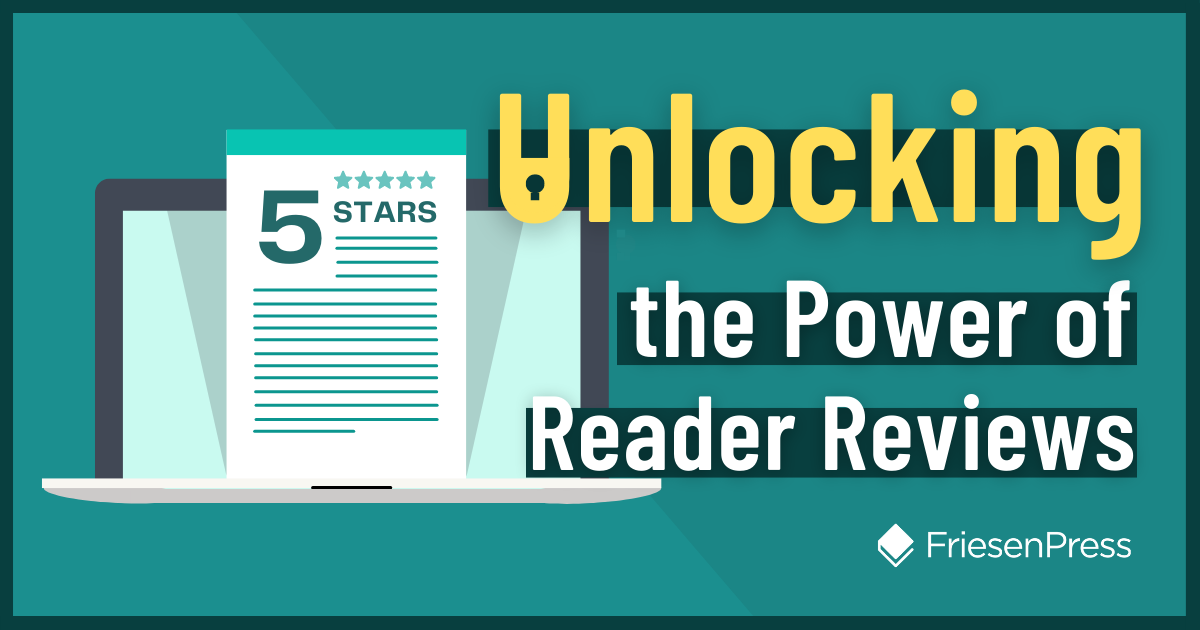Unlocking the Power of Reader Reviews
/Book professionals know that the most effective form of marketing is word-of-mouth marketing.
Hearing about a book from someone in your life is more appealing than being served an advertisement. In fact, Nielsen (a global leader in audience measurement, data, and analytics) reports that 92% of consumers trust suggestions from friends and family more than advertising. That’s not so surprising, but what is surprising is that 88% of people trust reviews written by other consumers just as much as recommendations from friends and family.
With that in mind, it’s crucial that we, as publishing professionals and authors, utilize reader reviews in everything we do.
Where to Garner Reader Reviews
Authors can of course collect reviews on most retail sites where their books are sold (Amazon, Barnes & Noble, etc.), but it’s also important to use book review apps/sites like Goodreads, StoryGraph, NetGalley, and Book Sirens.
Goodreads is a book reviewer social media platform owned by Amazon where readers post what books they are looking to read, currently reading, and have previously read alongside their ratings and reviews. When your book becomes available on Amazon, your book data is automatically fed over to Goodreads where a book page is created with the same information that is on Amazon. Authors can then claim their auto-created author profiles to interact with readers and create marketing campaigns. While readers have to wait until publication day to post reviews to Amazon, they can post pre-publication on Goodreads. This is where the bulk of pre-publication reviews should be collected.
StoryGraph is the independent response to Goodreads and shares many of the same features — although books must be manually uploaded by the author, publisher, or reader. Many readers have begun using StoryGraph as opposed to Goodreads to leave reviews and keep track of their TBR (to-be-read) lists. The platform has also created a giveaway function to help authors promote books to their readers. Many NetGalley reviewers will now post their reviews to StoryGraph as opposed to Goodreads.
NetGalley and Book Sirens function with the same premise: upload your digital manuscript for reviewers to download and review pre- or post-publication. This is a very effective way to seed books with early reviewers and get bloggers, journalists, librarians, educators, and publishing professionals. This service helps get these influential early readers talking about and promoting your book with their own networks prior to publication. After downloading a secure digital copy of your book, they are then encouraged by the platform to post reviews on NetGalley/Book Sirens. Reviewers will often repost their feedback on Goodreads, social media, and their own blogs as well.
How to Use Reader Reviews
When following up with those early readers, encourage them to post honest reviews to their own socials as well as sites like Amazon, Goodreads, and StoryGraph. Include a custom hashtag like #titlebook (#thegreatgatsbybook, for example) for them to include so that you can easily track social posts across multiple channels and platforms. Other actionable requests to include in follow-up emails are opting-in to a newsletter, posting a Q&A, hosting a giveaway, or the option for readers to signing up to be a beta reader for future books.
As reviews begin coming in, utilize them in your own efforts as an author. Don’t let them just collect dust on those virtual retail shelves! Upload reviews to your author website and socials, use them when pitching to bloggers, media, and booksellers, and add them to advertisements. Credit the site where the review can be found. For example: “This book is perfect for the holidays. — Amazon Reviewer.” Leading the charge (as usual) are romance and genre fiction, whose authors have been making a big push to use reader reviews in marketing. Katee Robert is an excellent example of an indie author utilizing her reader feedback to promote her books.
As publicists, we will adjust which reviews we include in pitches based on our target audience. If we’re pitching a journalist at a traditional outlet then we’re more likely to use an endorsement or trade review. If we’re pitching a blogger or influencer, it makes more sense to reference a 5-star review from Goodreads, StoryGraph, NetGalley, Book Sirens, or Amazon that will appeal to that blogger or influencer’s individual audience and brand.
We also use keywords and phrases from reader reviews to promote aspects of the book. If the book is described as being “perfect for the holidays,” for example, we may lean into that with advertising and pitching to appeal to that timing and aesthetic. What readers are saying gives us a lot of insight into the hooks we should be using when promoting, too. You may be pitching your book as a beach read when really readers are thinking of it as a cozy, rainy day read. Those insights into how books are received are vital for future promotion.
The need for reviews can’t be overstated for the publishing industry. Not only do they educate retail algorithms and keep your book listings up to date and relevant, but they inform purchasing decisions by individual readers and bookstores as well. Every time your book comes up in conversation, it should be followed by a request for an honest review. It’s as easy as mentioning how important they are for authors and how much they mean to you as an individual. You've got nothing to lose by asking — only marketing leverage to gain.
Olivia McCoy is a Book Publicist at Smith Publicity, the most prolific book marketing agency in the publishing industry, with thousands of books promoted since 1997. From first-time, self-published authors to New York Times bestsellers, Smith Publicity promotes every genre, and has secured media coverage for authors and books with every top media outlet in the U.S. And Canada. Sign up to receive news and updates from Smith Publicity here. Contact Smith Publicity at info@smithpublicity.com.












